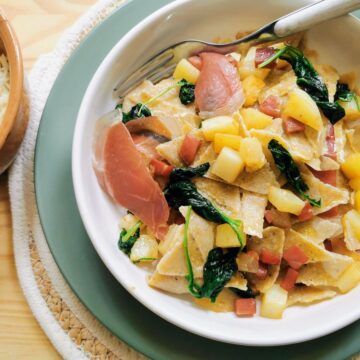Blecs buckwheat pasta, also known as biechi, is a nutritious rustic type of maltagliati from Friuli-Venezia Giulia. This easy to make homemade fresh pasta is most often served with just butter, sage leaves and local Montasio cheese but this recipe from Italian celebrity chef Alessandro Borghese pairs blecs with speck, potatoes and spinach in a dish full of the flavors of the region.
The cuisine of Friuli-Venezia Giulia.
The cuisine of Friuli-Venezia Giulia in Northeast Italy is one of the country’s most distinctive and diverse, reflecting its unique position at the crossroads of Italian, Austrian, Slavic, and Hungarian cultures. This region blends Mediterranean ingredients with hearty Alpine and Central European flavors, offering both rustic dishes and refined cuisine.
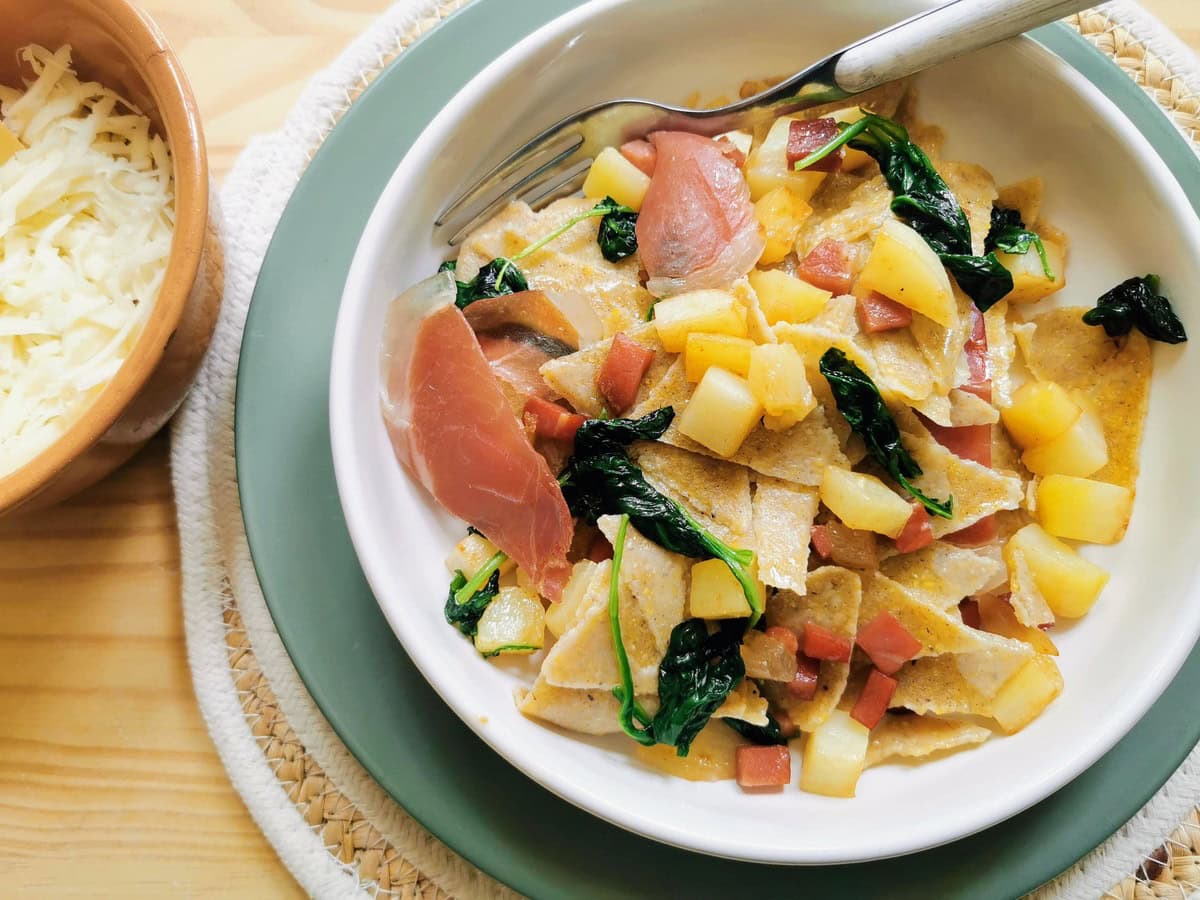
In fact, unlike the Southern regions, typical recipes from this part of northern Italy include goulash, strudel, pickled vegetables, Slavic potato dishes and soups, as well as pasta, mountain cheeses and cured meats! This blecs pasta recipe incorporates many of the flavors and typical ingredients of this region.
What does the word ‘blecs’ mean?
According to food historians, the word blec means ‘patch’ or ‘piece’ and refers to pieces of cloth that were used to ‘patch’ tears in clothes. In fact, once cooked, blecs do resemble pieces of cloth.
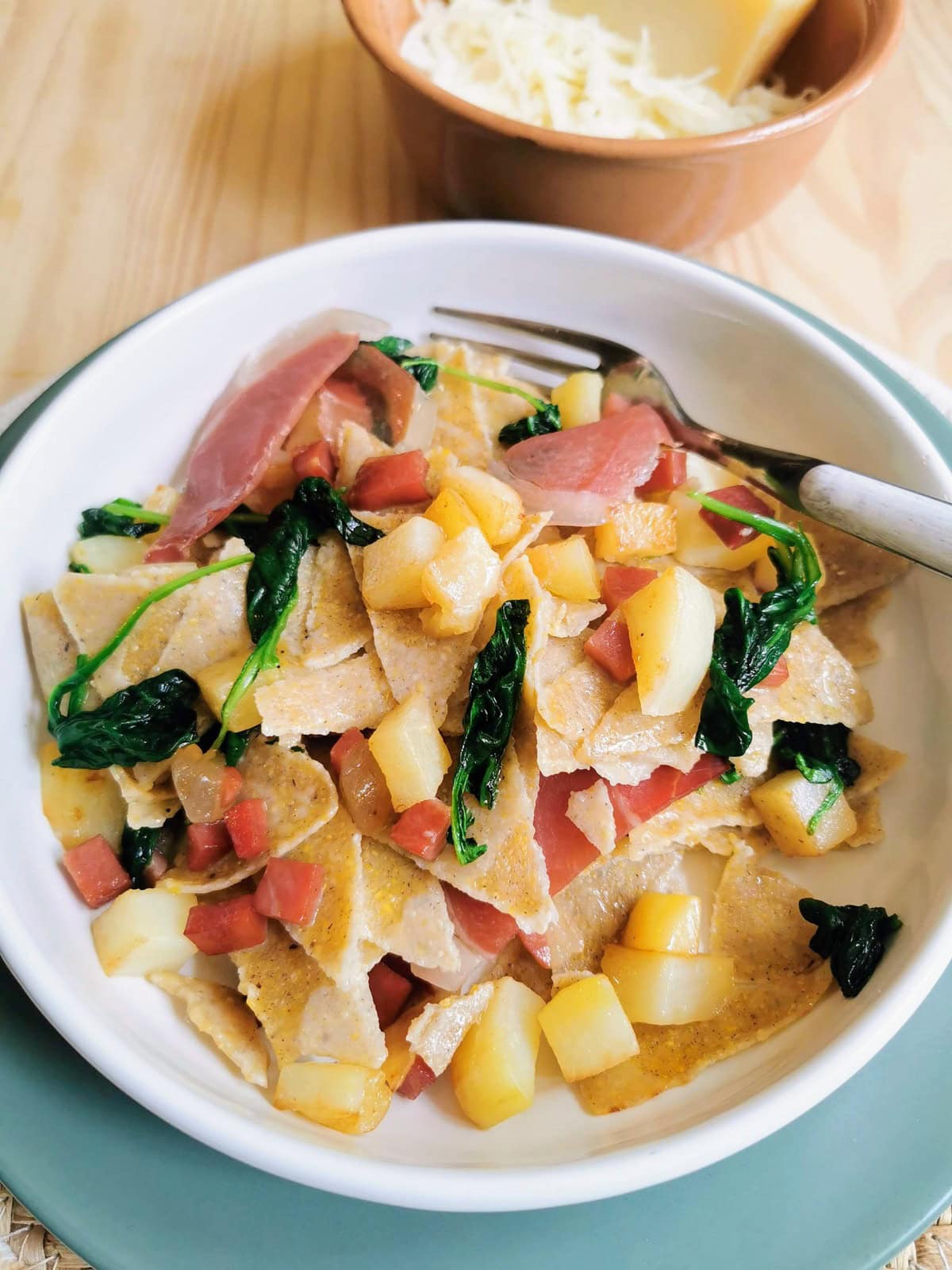
What shape is blecs buckwheat pasta?
Blecs is actually a type of Italian pasta generally known as maltagliati. Maltagliati, which means badly cut, originated as a resourceful way to use leftover pasta dough. The leftover dough is cut up into irregularly shaped pieces.
You can find this type of pasta throughout Italy although it has different names in some places, for example corn and wheat flour triangular patellette from Abruzzo.
Like patellette, blecs is traditionally triangular in shape, although some people make pasta squares or rectangles. Also, like patellette, blecs is made from a mixture of flours.
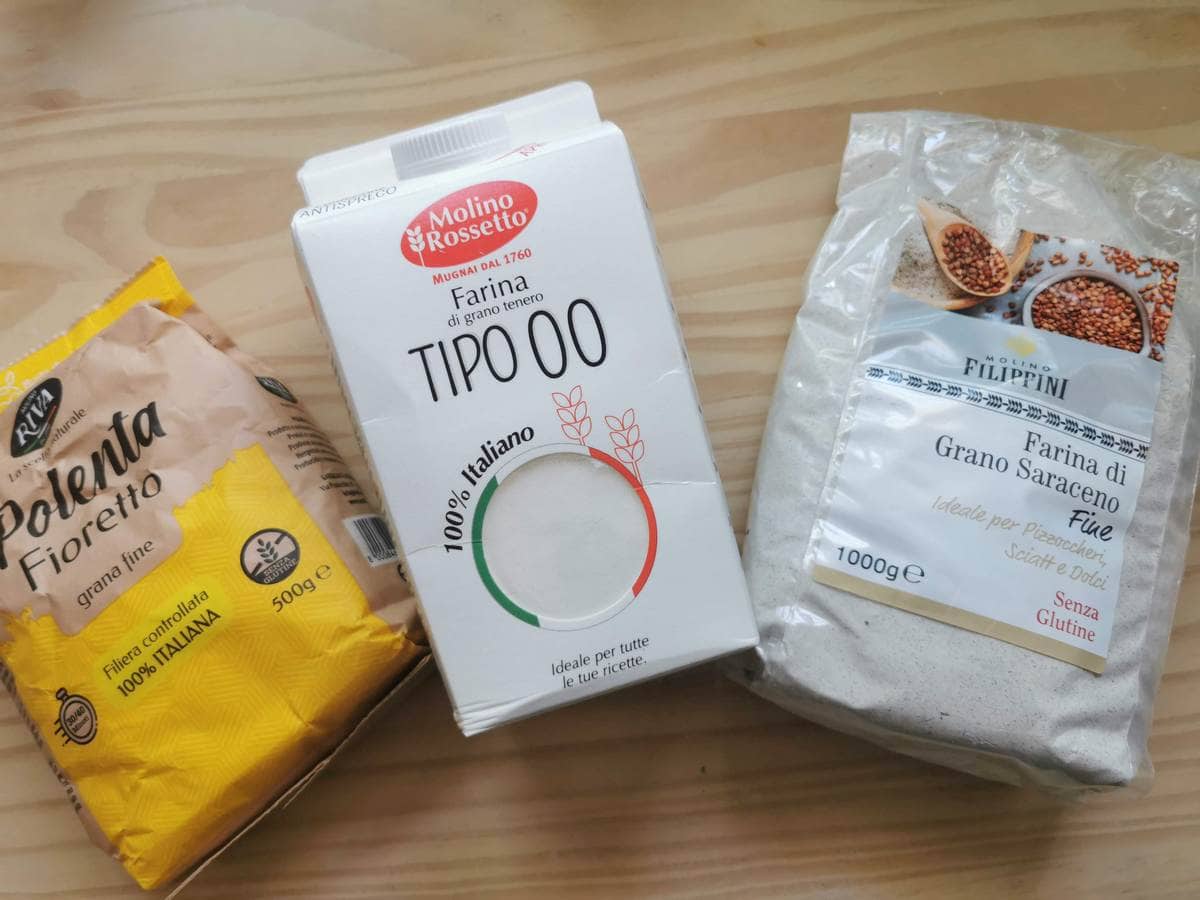
What flour is used to make blecs?
Nowadays, some Italians make blecs pasta with just a mixture of buckwheat flour and soft wheat flour. However, from my research, I have found that 3 types of flour seem to be the most common.
These are buckwheat flour, soft wheat flour and corn meal flour. Both buckwheat flour and corn flour are gluten free, and I have seen recipes for blecs calling for just those two flours. But I haven’t tried it myself.
Apart from the types of flour used, blecs pasta recipes also vary in the ratio of flours. Some call for more soft wheat flour than buckwheat or corn meal. However, the recipe I followed from chef Borghese stipulates equal amounts of each flour. So this is what I used.
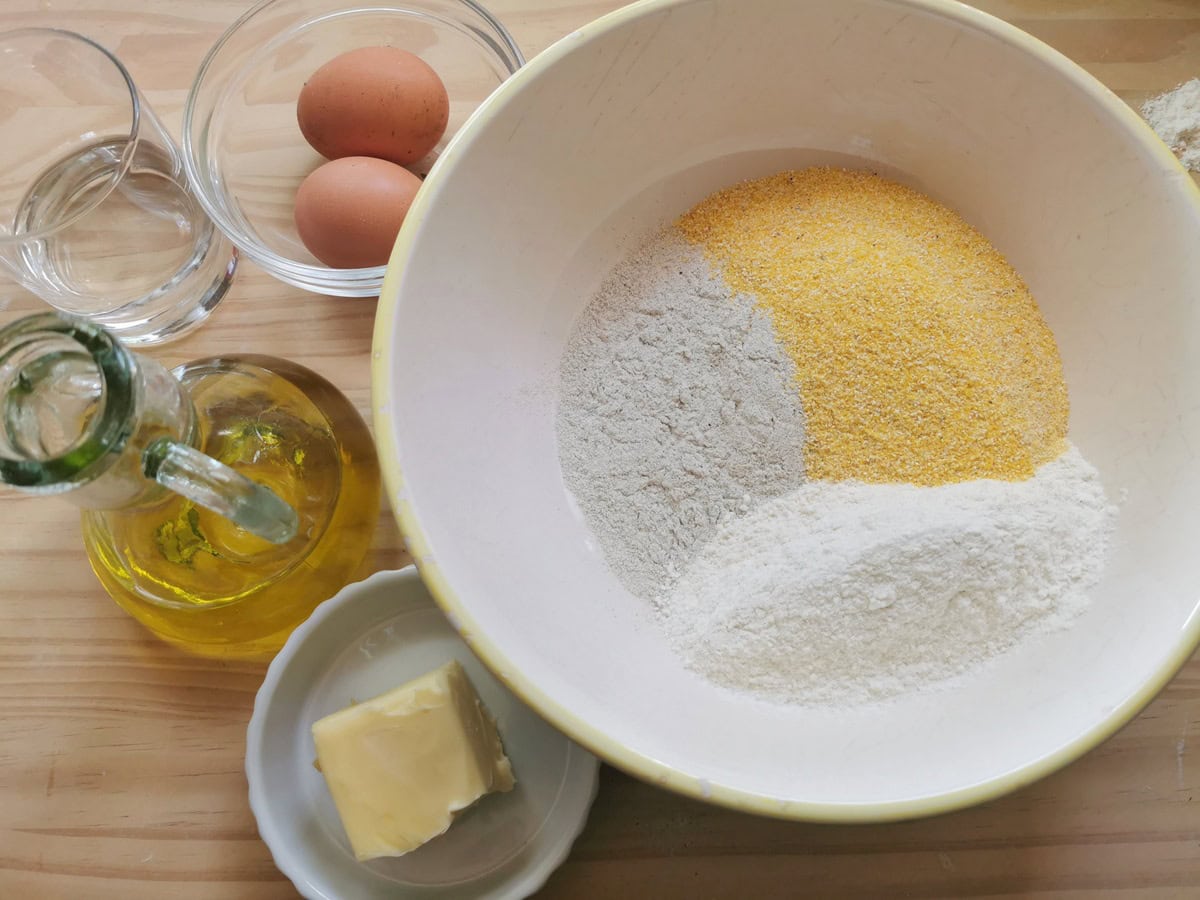
Ingredients for blecs pasta dough.
Flours: As mentioned above this recipe calls for 3 types of flour. Soft wheat flour which in Italy would be ‘00’ flour but you can use all-purpose flour instead. Buckwheat flour (farina di grano Saraceno in Italian) and fine ground cornmeal flour (farina di mais fioretto in Italian).
Eggs: Blecs is actually a type of egg pasta. The ratio in this recipe is 2 eggs to 300g (10.5 oz) of flour. I like to use free-range bio eggs because they taste better, are more nutritious and healthier.
Soft butter or extra-virgin olive oil and water: Some blecs recipes call for softened butter in the dough. Others use a little olive oil and water. I used butter but if you want to keep the pasta dairy free use tepid water and a little olive oil to help you get the dough to the right consistency.

Ingredients for the condiment.
Speck: Speck is a smoked cured ham most famously from the South Tyrol but also from Friuli-Venezia Giulia. One of the best specks from Friuli is called speck di Sauris, the latter is a village in the Friulian Dolomites famous for the production of cured meats. Speck is like a cross between cured ham and bacon. To substitute, you can use prosciutto crudo, pancetta or bacon.
Potatoes: Potatoes are a common ingredient in Alpine recipes. In the recipe I followed, chef Borghese recommended a type of yellow potato from Lazio called ‘patate dell’alto viterbese IGP’. Of course, you can use other yellow potatoes such as Yukon Gold.
Cheese: Montasio is the cheese they usually serve with blecs pasta in Friuli-Venezia Giulia. This is a mountain cheese made from fresh cow’s milk in East Veneto and Friuli. Montasio derives its name from the Montasio mountain range of Friuli, north of Venice. It was originally produced in the 13th century by Benedictine monks at their monastery in the Giulia Alps.
You can substitute the Montasio with Asiago, Emmental or fontina. Alternatively, use Parmigiano-Reggiano cheese.
Baby spinach: You only need a small amount of spinach, preferably small leaf fresh baby spinach. But normal spinach will work too.
Butter: Italians mostly use unsalted butter. If you use salted butter, don’t add extra salt to the dish.
Step by step instructions.
Make the blecs buckwheat pasta dough.
1) Combine the soft wheat flour, corn meal flour and buckwheat flour with a pinch of salt in a large bowl.
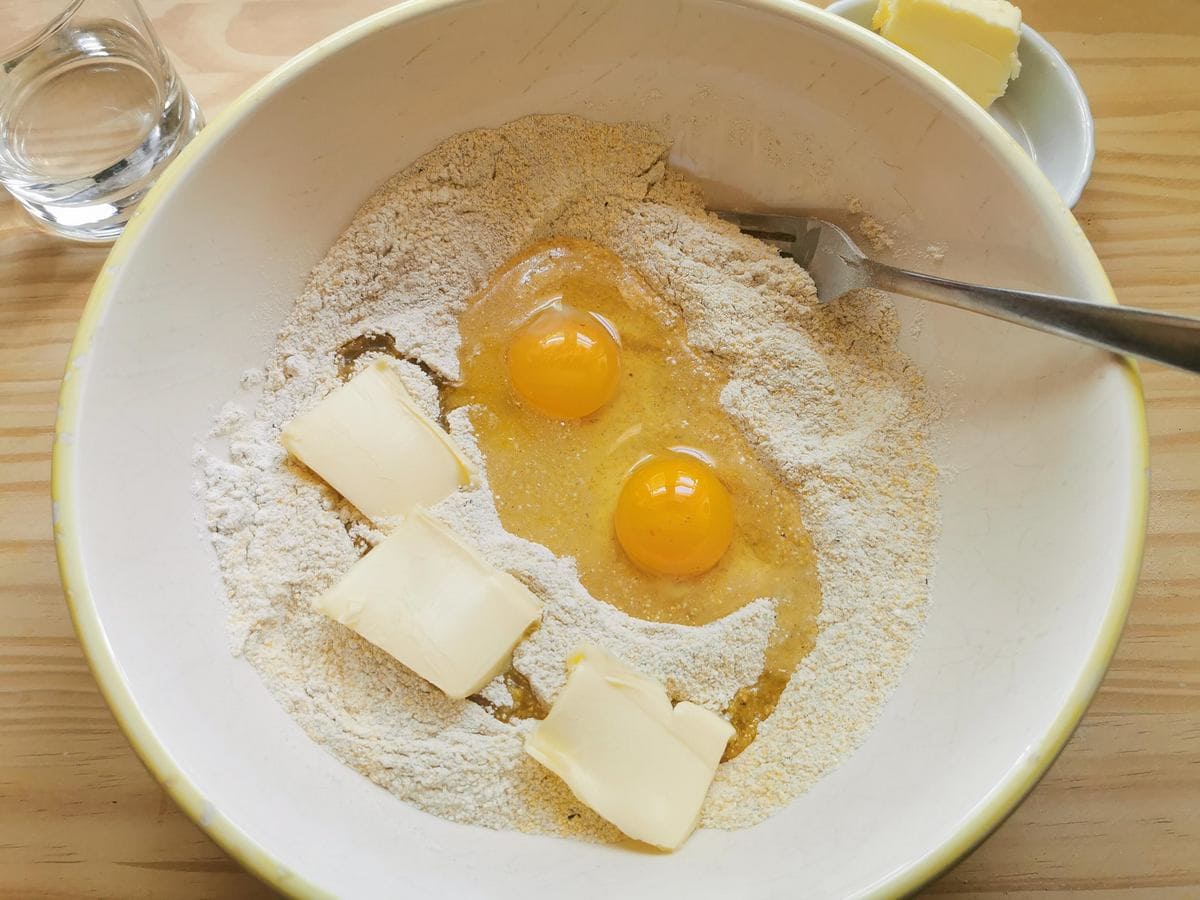
2) Make a well in the centre, crack in the eggs, beat them with a fork. Add the softened butter cubes and mix everything together with the fork first. Then, use your hands to knead until you have a dough that can be shaped into a ball.
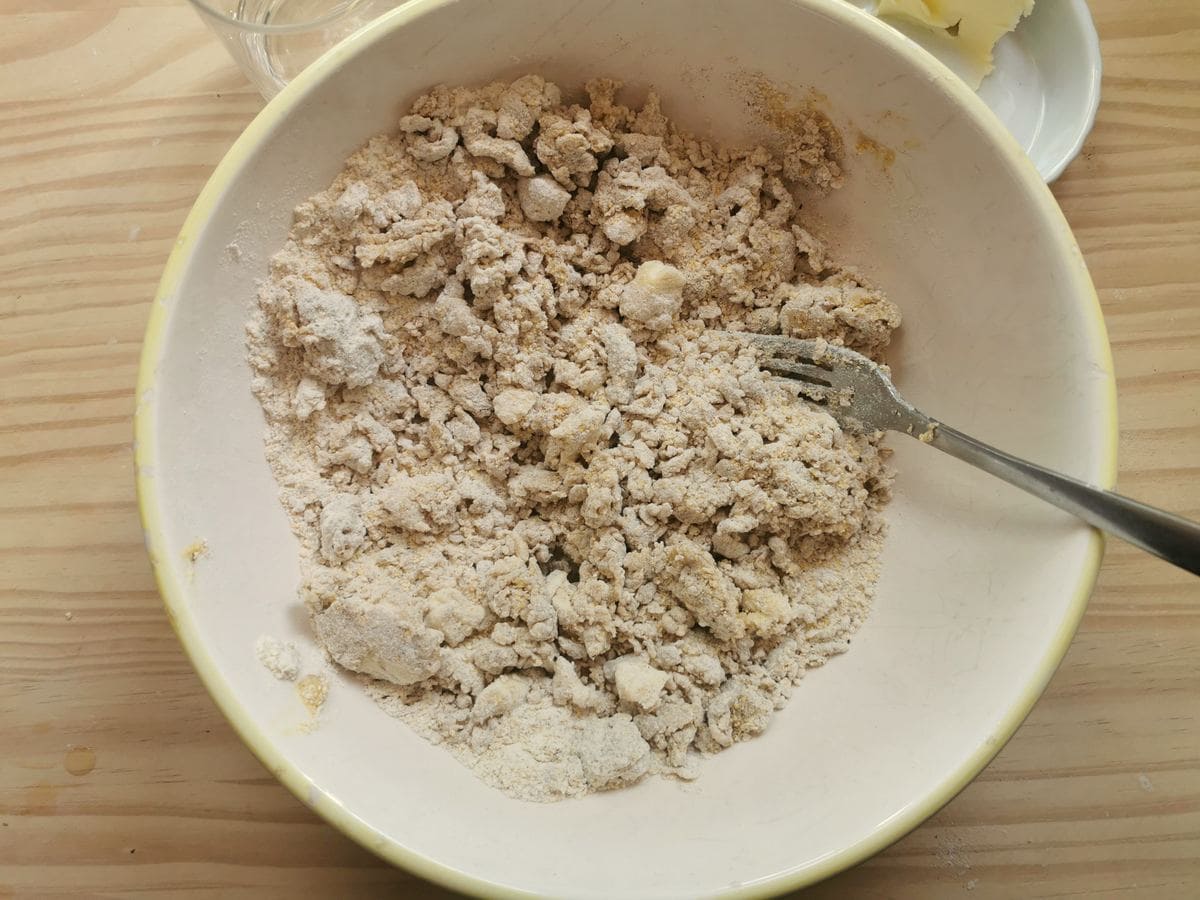
3) Turn the dough ball out onto a flour dusted wooden board and keep kneading a little longer until you have a firm but smooth dough. Add a little water if it’s too dry. Roll the dough into a ball and wrap in plastic wrap and let rest for at least 30 minutes at room temperature.
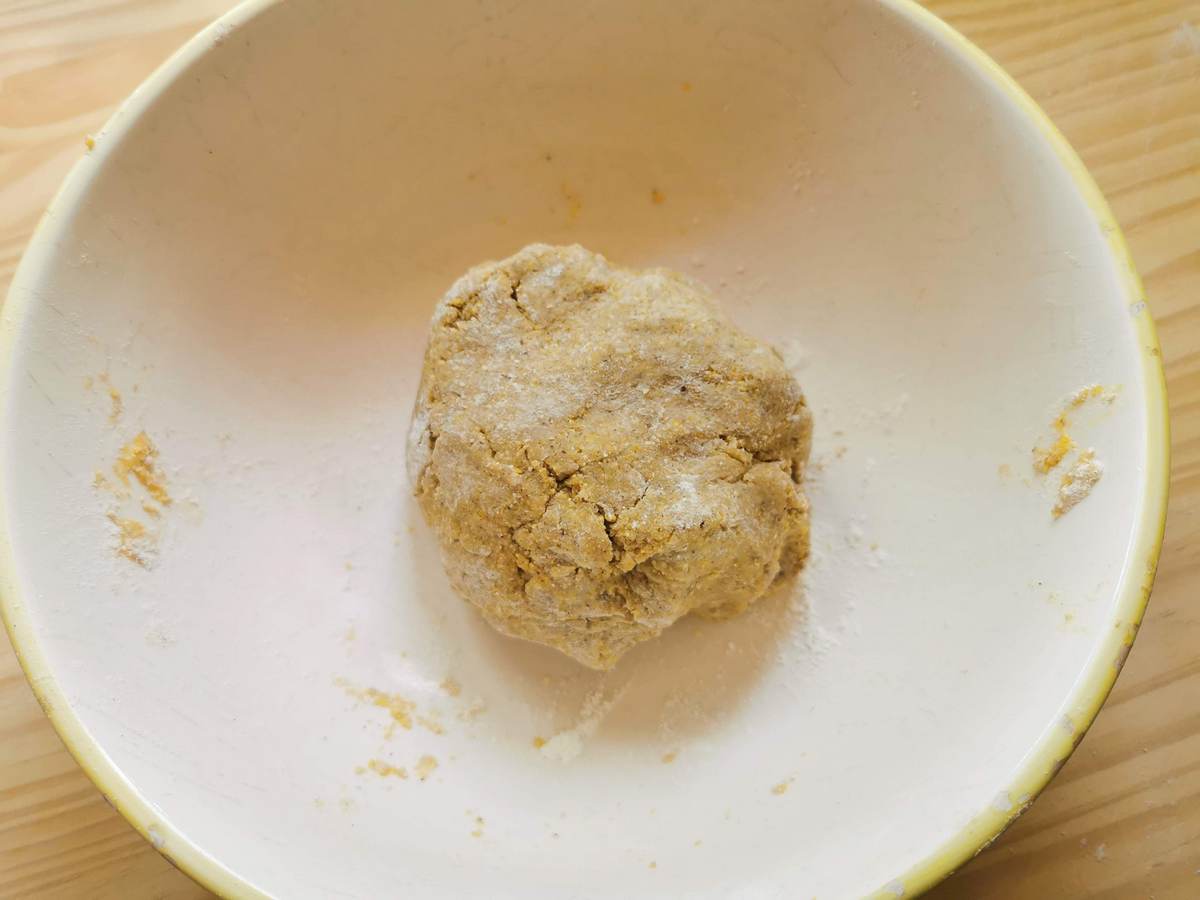
Make the blecs triangles.
4) Use a rolling pin to roll out one third of the rested dough at a time on a floured surface to about 1–2 mm thickness. Like other buckwheat pasta dough (pizzoccheri), I find blecs dough to be difficult with a pasta machine. It’s a delicate pasta dough and can break easily. However, it holds together well when cooked.
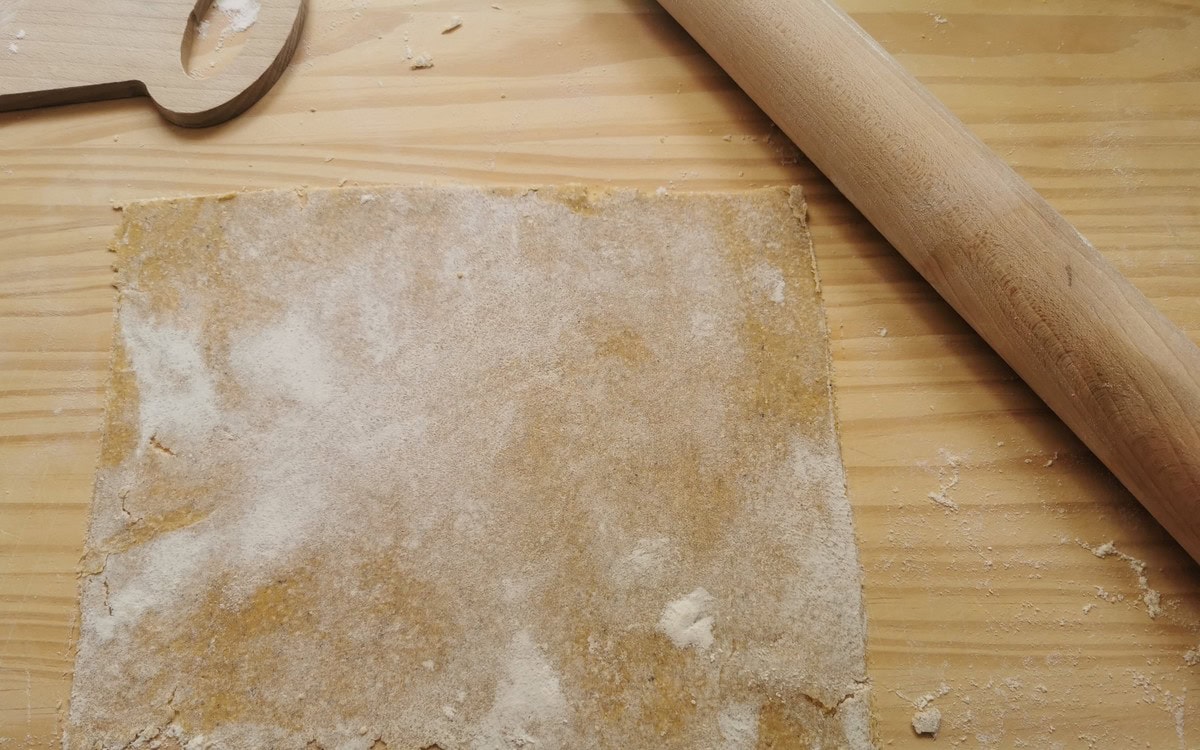
5) Use a knife, pasta cutter or fluted pastry wheel to cut the dough sheet into rough, irregular triangles about 4cm wide at the base (this rustic cut is what defines ‘blecs’). Place the ready handmade blecs pasta on a flour dusted tray or work surface and repeat with the rest of the dough.
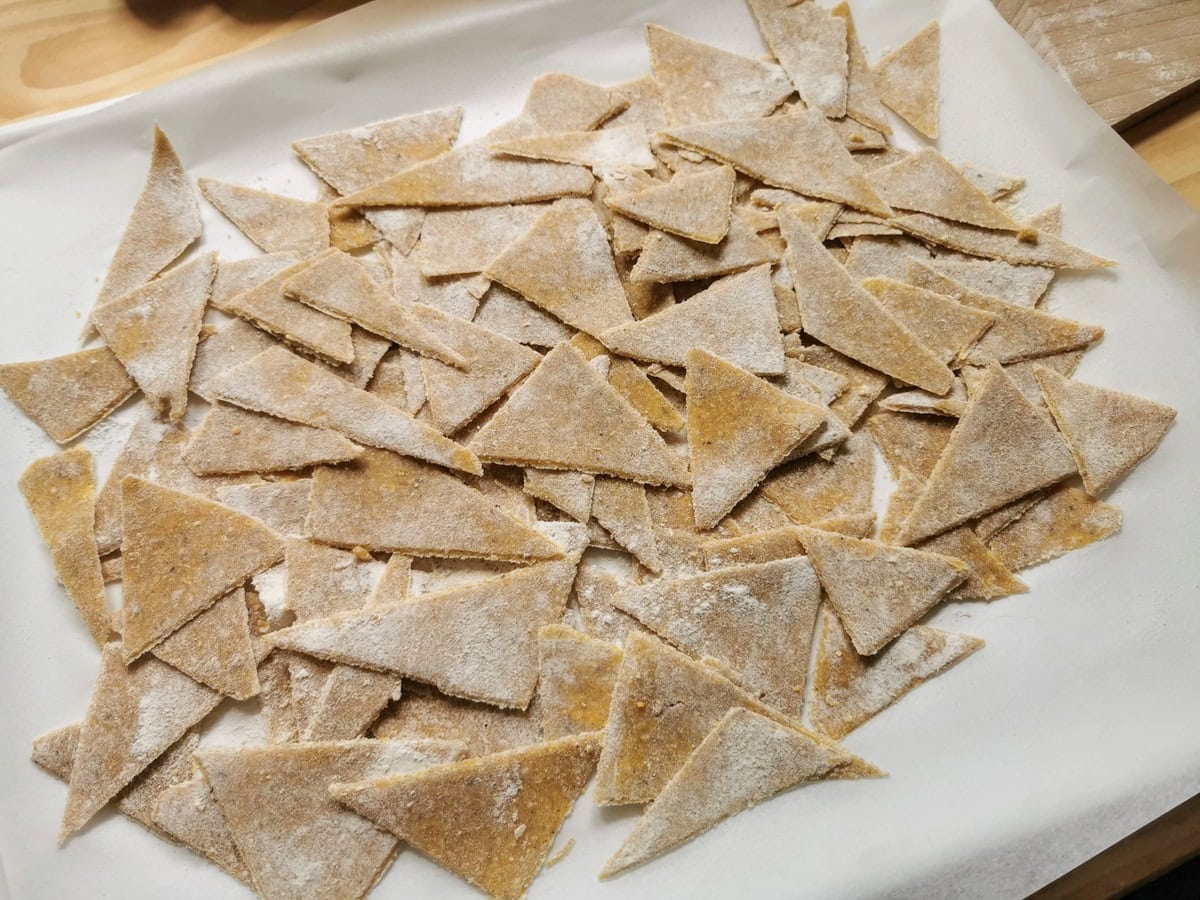
Make the condiment.
6) Peel and parboil the potatoes and then cut them into small cubes. Cut the speck into small cubes as well, and a few small slices too. Wilt the spinach in a small frying pan with a little butter. Grate the Montasio cheese.
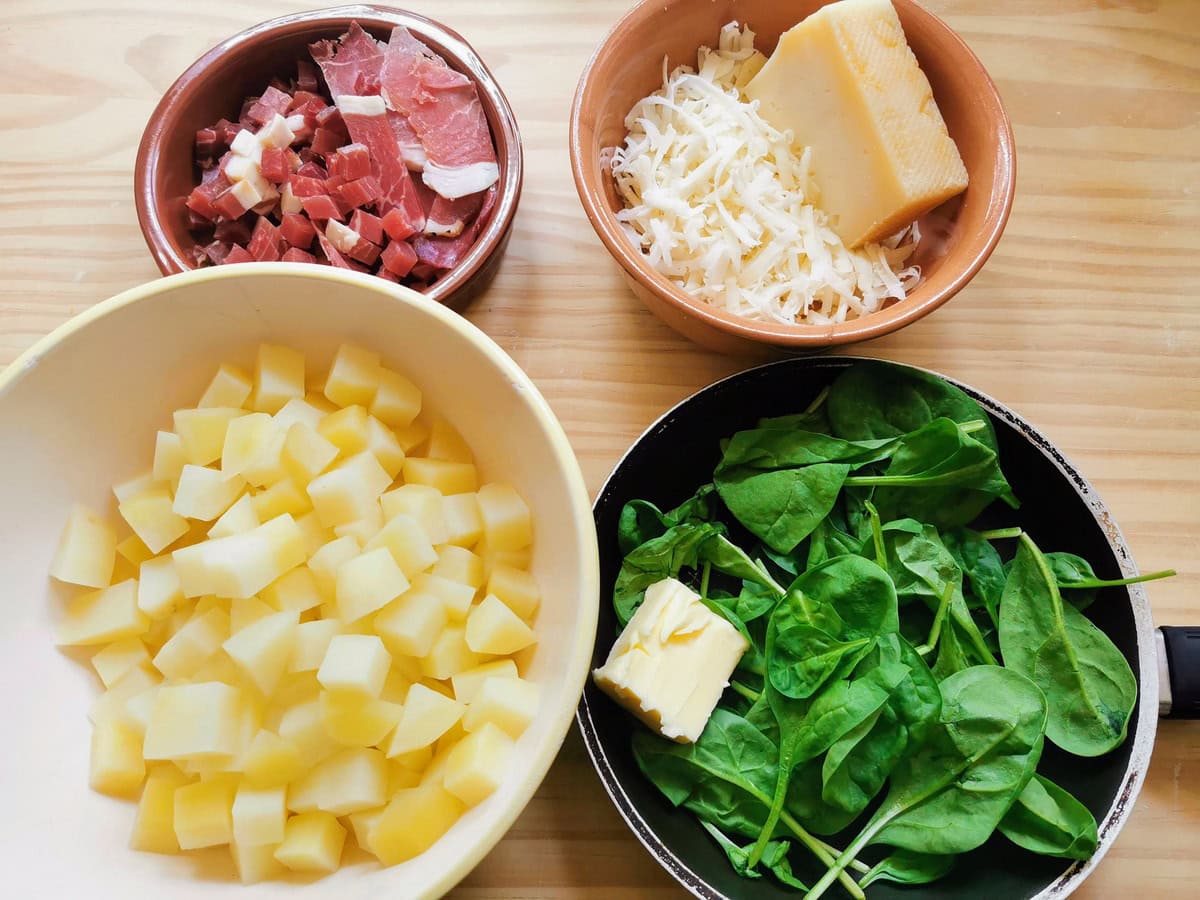
7) In another larger skillet sauté the potatoes and speck in some butter until the potatoes start to brown.
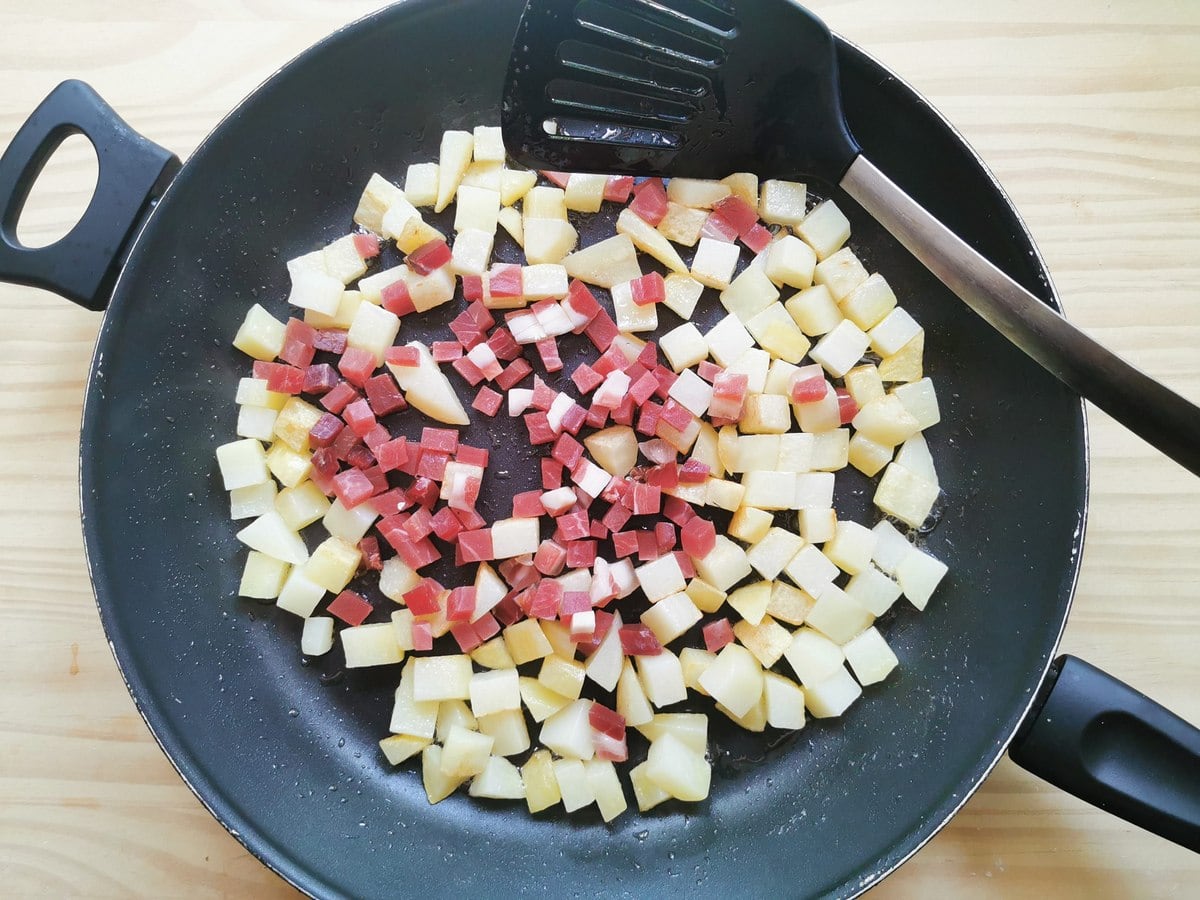
Cook the blecs pasta.
8) Bring a large pot of water to a boil. Add salt and then bring to a boil again. Cook the blecs in the boiling water for about 2–3 minutes or until they float and are al dente. Drain, reserving a little pasta water. Add the blecs to the potatoes and speck.
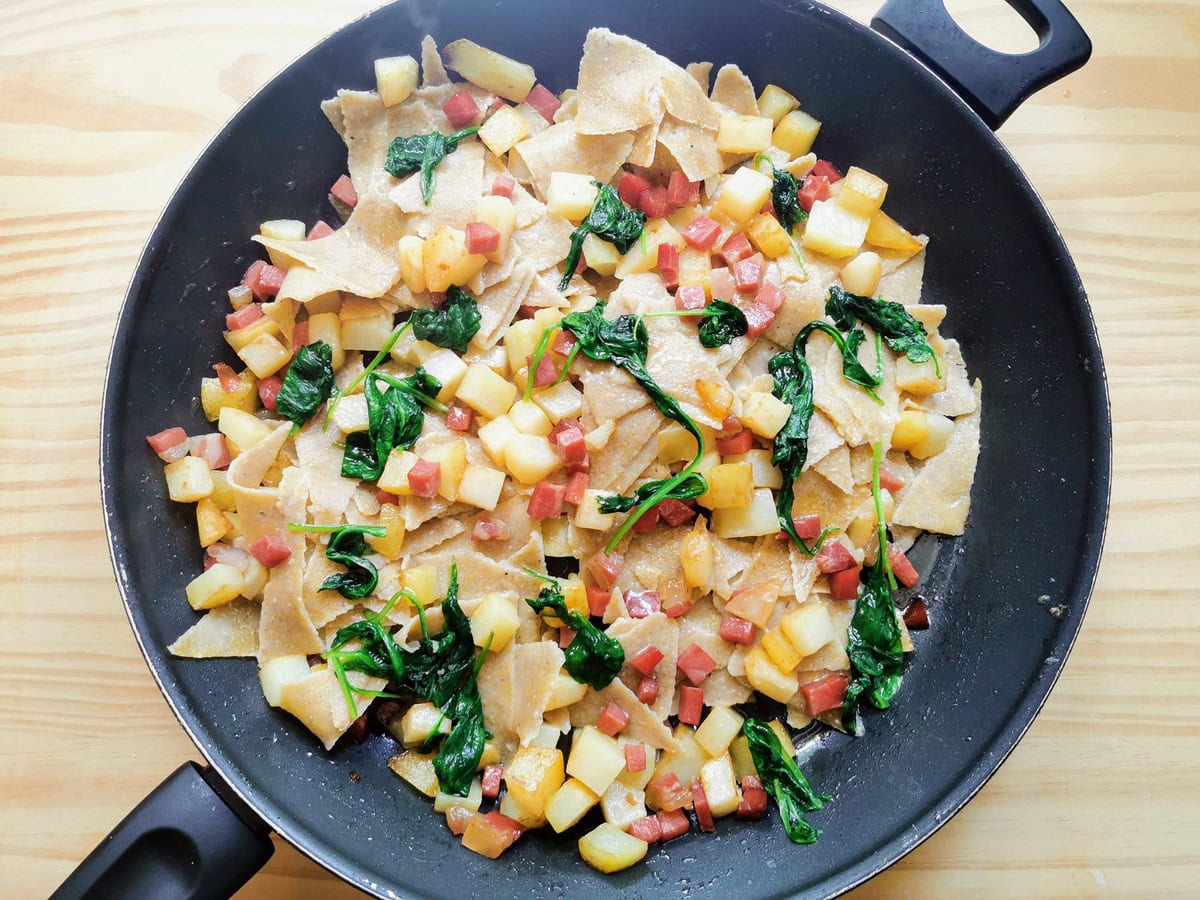
Finish and serve.
9) Add more butter to the skillet along with some grated montasio and the wilted spinach. Mix everything together over a low heat. If the dish seems dry, add a little pasta cooking water.
10) Serve immediately with more grated cheese.
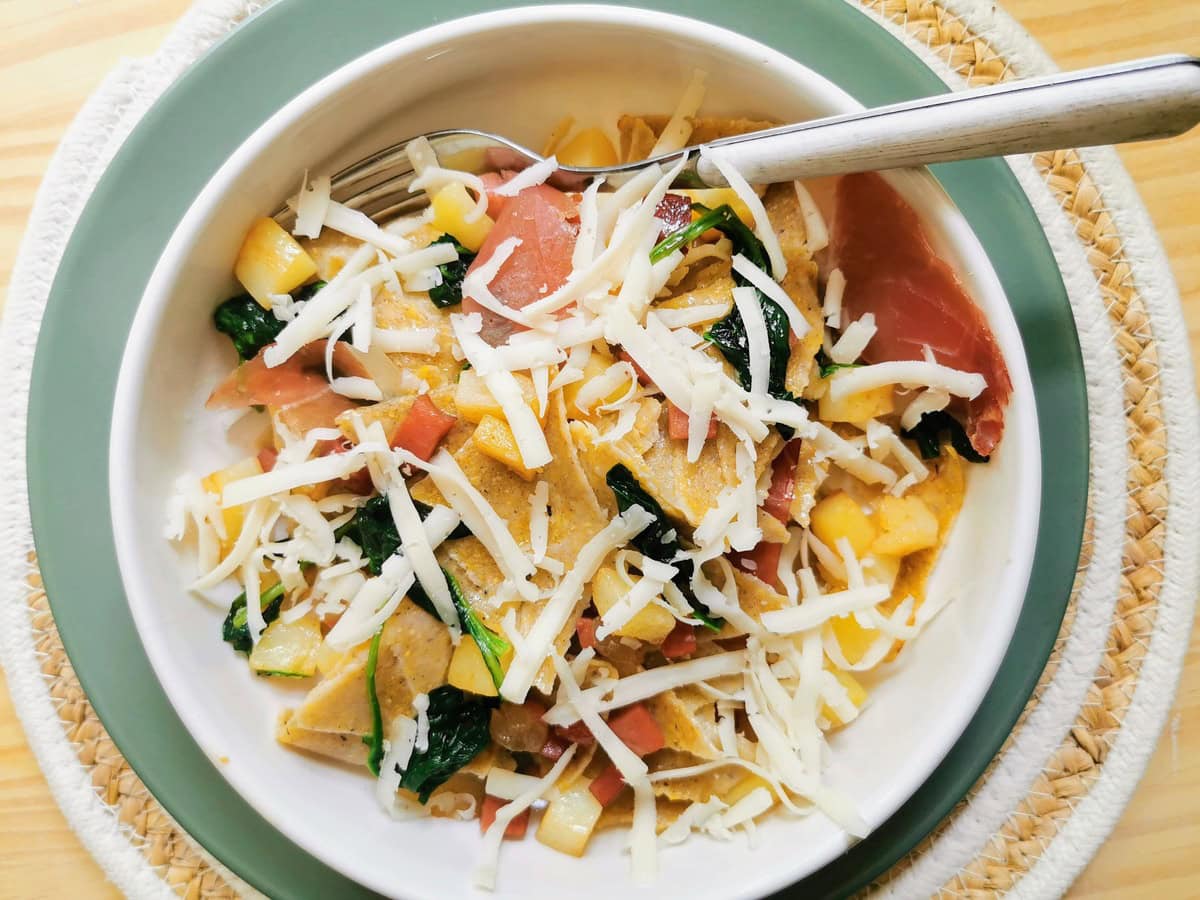
Different ways they serve blecs pasta in Italy.
The condiment for blecs pasta can vary depending on which part of the Friuli Venezia Giulia region you are in. You can find blecs served in the classic way I mentioned above with butter, sage and a sprinkling of Montasio or a mushroom ragu.
However, in Gorizia, they make ‘biechi’ with rooster, capon or duck, also just with ricotta, or sausage and wild fennel. And in the Carso (Karst plateau), they enjoy their blecs with a traditional sauce made with Terrano, a full-bodied red wine from the area.
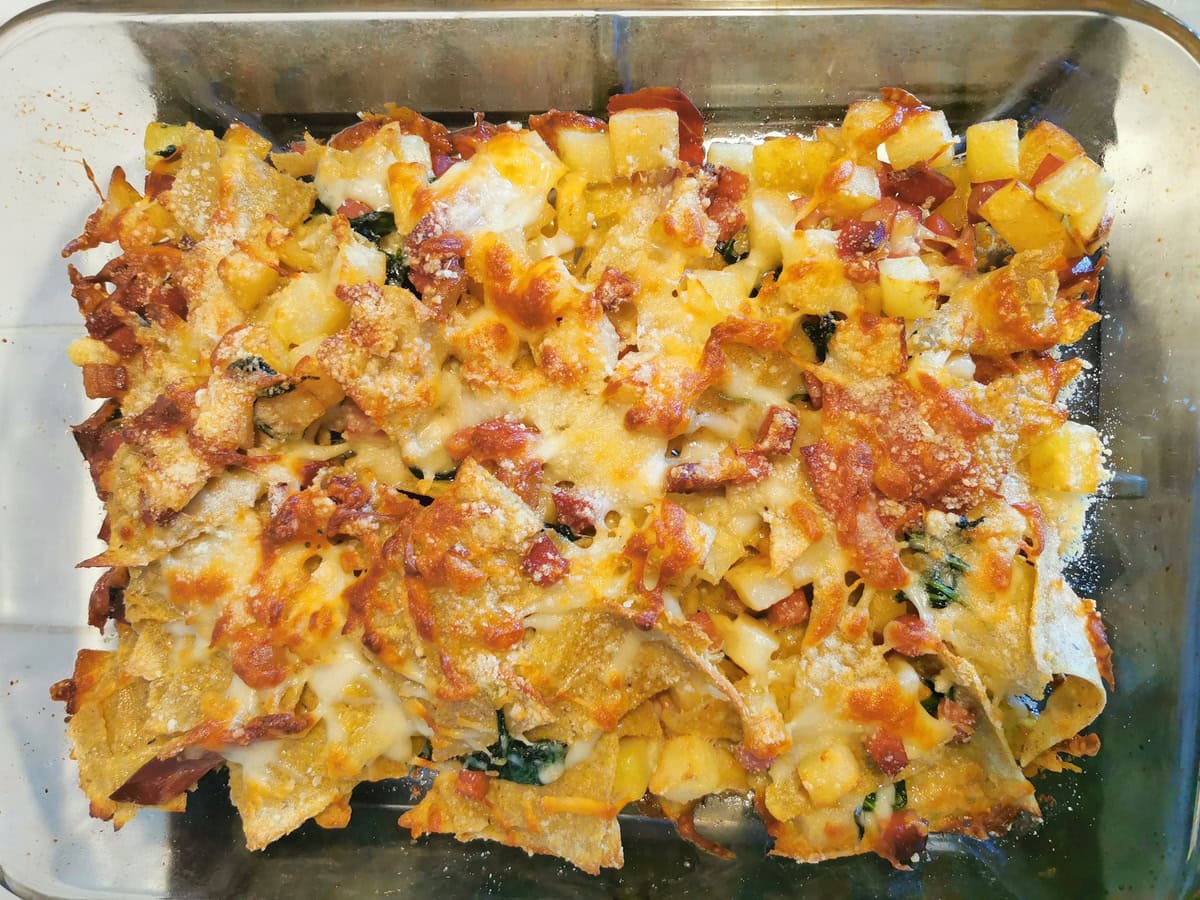
What to do with leftovers.
Leftovers of this dish are delicious baked in the oven with some more cheese grated on top. In fact, the baked version of this dish is a little similar to nachos with the blecs looking and tasting like whole wheat flour tortilla chips!
Pin for later.
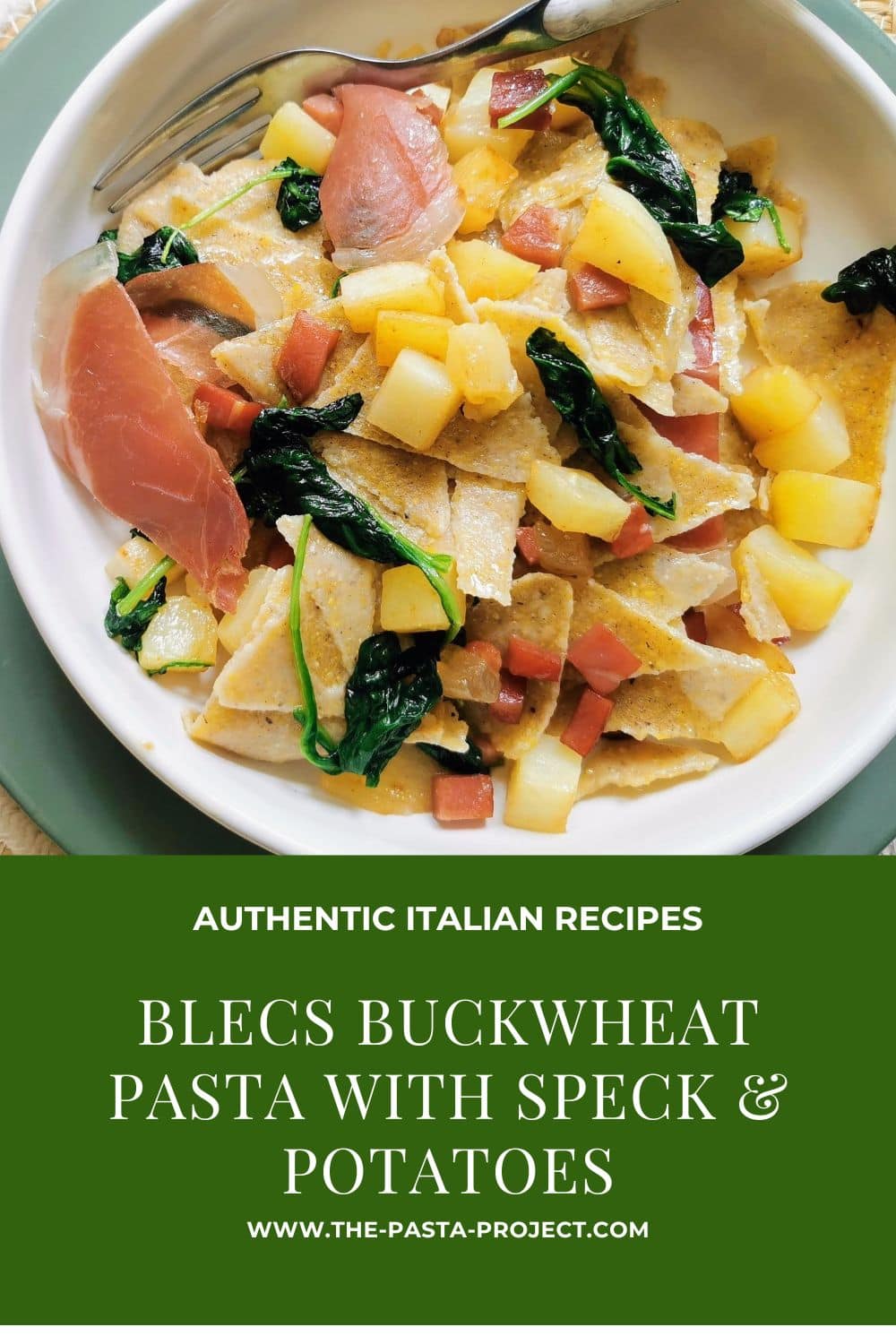
Let me know what you think.
Friuli Venezia Giulia’s cuisine is deeply rooted in its landscape and history. It’s not flashy, but it’s complex, comforting, often hearty and full of tradition—a hidden gem in the tapestry of Italian regional food.
Blecs pasta has a distinct flavor with nutty undertones and an earthy taste. Together with the condiment in this recipe, it makes a hearty meal. However, you can also just serve it with melted butter, crispy sage leaves and some grated Montasio.
If you try this regional recipe for blecs buckwheat pasta, I’d love to know what you think. Please write a comment here on the blog or post a comment on the Pasta Project Facebook page.
Your feedback means a lot to me!
Buon Appetito!
Other rustic types of pasta and gnocchi to try.
- Chestnut maltagliati with mushrooms
- Homemade chestnut pasta with pork and cabbage.
- Scarpinocc di Parre.
- Homemade cheesy gnocchi.
- Teardrop dumplings (chnèfflènè)
More Recipes from Friuli Venezia Giulia
Reader Interactions

